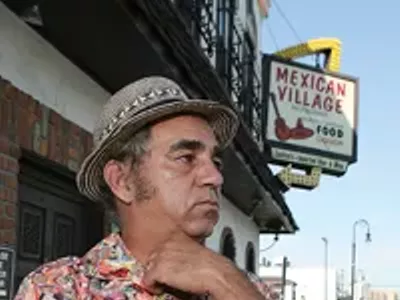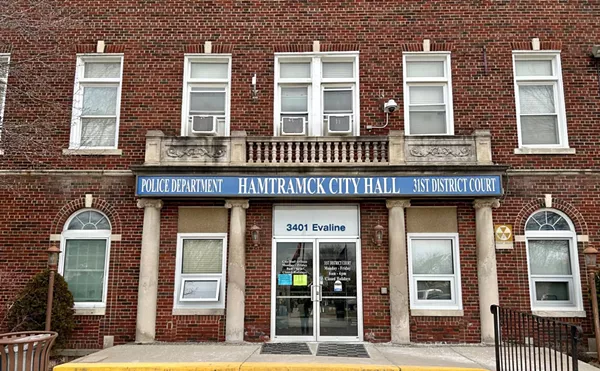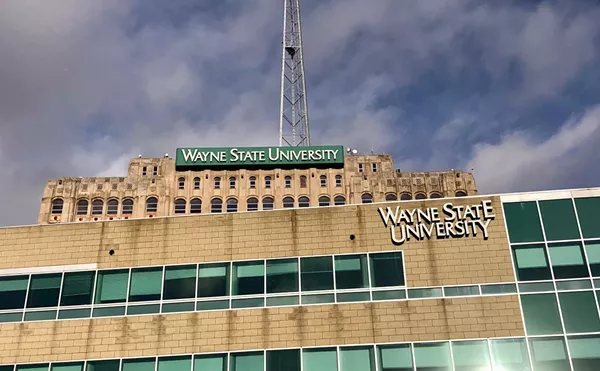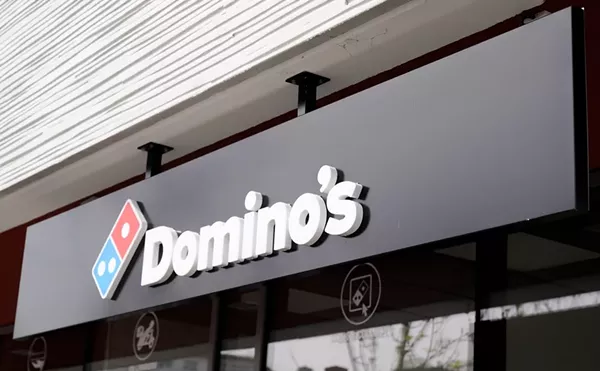
Audio By Carbonatix
[
{
"name": "GPT - Leaderboard - Inline - Content",
"component": "35519556",
"insertPoint": "5th",
"startingPoint": "3",
"requiredCountToDisplay": "3",
"maxInsertions": 100,
"adList": [
{
"adPreset": "LeaderboardInline"
}
]
}
]
As Lawrence Technological University students register, visit tutoring centers and meet with advisers in the Southfield school's Student Services Center, they're bathed in natural light that's filtered by UV-protective glass throughout the 42,000-square-foot building. Inside paneling is made of bamboo, a rapidly renewable material, and outside landscaping requires minimal water.
At Affirmations community center in Ferndale, a bike rack and shower facilities are available in the basement to encourage staff to cycle to work. Recycling bins are stationed throughout the four floors, skylights offer enough sunlight so that the only electric light working on the first floor on a sunny day is the emergency exit indicator. Most office furniture is donated, and other chairs and couches are made from materials that don't emit gases from the chemicals used in upholsteries, for example, that irritate people's sinuses.
The new headquarters for the Kresge Foundation was built with 76 percent of materials that originated within 500 miles of the Troy site, saving transportation expenses. The building's air temperature is controlled by 40 geothermal wells that reach 400 feet into the ground below the parking lots. Water moves heat out of the building into the ground during the summer and does the reverse in the winter at a cost savings over conventional heat and air conditioning.
These three buildings, like a growing number nationally and in southeast Michigan, are "green." Built with materials and systems certified by the U.S. Green Building Council, these structures have numerous elements of sustainable design. The results: lower energy costs, better inside air quality that improves employees' health and therefore job satisfaction and productivity, improved water efficiency, and other energy-saving and environmentally friendly benefits.
"The main reason we're doing it is to save energy. It's good for the Earth, obviously, but it's going to save us money," says Jim Newman, an environmental building consultant based in Bloomfield Hills.
The U.S. Green Building Council grants LEED, or Leadership in Energy and Environmental Design certification, which is a national rating system for green buildings. In 2002 there were 38 buildings that earned certification; last year that number jumped to 889, says Ashley Katz, spokeswoman for the council.
Newman, who has worked on sustainability issues since the early 1970s, when he designed and developed custom industrial heating and air conditioning equipment for the automotive industry, says the external validation the official LEED certification proves is important.
"One of the things you used to be able to say before third-party certification was, 'My product is green,' ... or 'It's a healthier product' or 'I have a green building,' and there was no way to say you weren't telling the truth," he says.
In 1999, the council had just 268 members. Today it's made up of about 9,000 architects, engineers, building owners, government agencies, planners, code officials and interior designers.
"I think it's good for your building to have the actual certification," says Christine Harris, senior architect with Facility Engineering Services Group, a Wixom company that specializes in industrial projects. "From a commercial property value standpoint, if it's a tenant-occupied building, then it tells tenants they're going to reap the benefits of this in terms of their operation."
In Michigan, 211 projects have applied for official LEED status with 45 certified to date, Katz says. She adds that ninety-eight percent of applications are certified. Lawrence Tech's student services center has earned "silver" status from the silver, gold and platinum rating beyond regular LEED certification. Affirmations and Kresge expect certification approval later this year.
Building a facility that meets the strict criteria for LEED certification can add between 1 percent to 5 percent to a building's cost up front, Katz admits, but energy savings over time can help recapture those dollars.
Harris agrees: It pays to be green. "It's pretty much a wash these days, I think, if you look at life-cycle costing," she says. "Up front there are some aspects of it that make it more expensive initially but if you look at long-term energy savings and building operation, then generally it more than pays for itself.
Green planners like Newman are hoping to convince municipalities to change their codes to require or at least reward environmentally conscious building projects. He's working with Birmingham, Rochester Hills and Auburn Hills for starters.
"That's something we're looking at as a city," says Vincent Nathan, director of the Detroit Department of Environmental Affairs.
The Kresge Foundation, for its part in the private sector, launched its Green Buildings Initiative in 2003 and has since awarded 101 planning grants totaling $6.2 million to nonprofits to design sustainable buildings. Funds totaling about $7.2 million are committed to 42 nonprofit organizations that will be awarded when they become LEED certified, says Kresge spokeswoman Cynthia Shaw. Affirmations received such money for design and construction of the Ferndale site.
At Lawrence Tech, a few hundred local architects and builders attended a recent conference on LEED certification and green building. Joseph Veryser, associate dean at the College of Architecture and Design, told the group that the student services center was a starting point for a future of green building there.
"We couldn't do it for the whole campus but we made it incrementally better for the area we touched," he says.
Veryser predicts LEED certification will become obsolete because constructing buildings with the least environmental impact will someday be the standard. "We're a long way from that," he says, "but the day will come."
Sandra Svoboda is a Metro Times staff writer. Contact her at 313-202-8015 or ssvoboda@metrotimes.com




